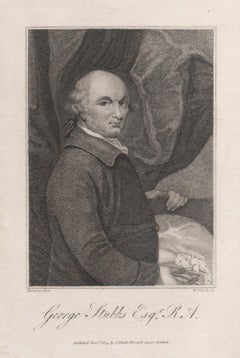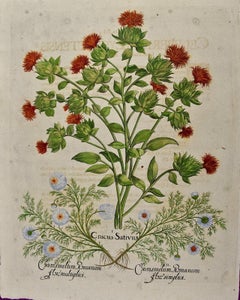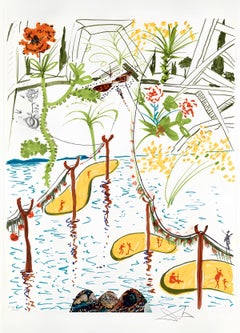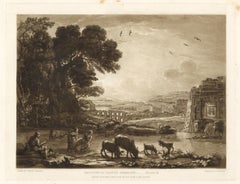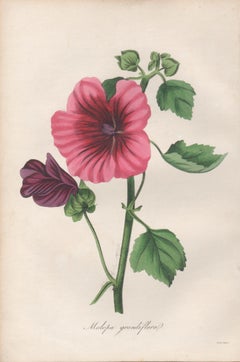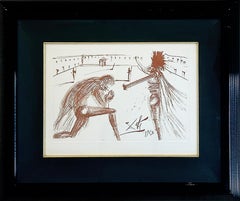Art by Medium: Engraving
Early 19th Century Naturalistic Art by Medium: Engraving
Engraving
Early 18th Century Academic Art by Medium: Engraving
Engraving
1970s Surrealist Art by Medium: Engraving
Mixed Media, Drypoint, Lithograph, Screen
1820s Art by Medium: Engraving
Engraving, Mezzotint, Etching
Mid-19th Century Naturalistic Art by Medium: Engraving
Engraving
1970s Surrealist Art by Medium: Engraving
Engraving, Drypoint
Mid-19th Century English School Art by Medium: Engraving
Watercolor, Handmade Paper, Engraving, Lithograph
1930s Modern Art by Medium: Engraving
Drypoint, Etching
Late 19th Century Victorian Art by Medium: Engraving
Engraving
18th Century Naturalistic Art by Medium: Engraving
Engraving
1880s Impressionist Art by Medium: Engraving
Drypoint, Etching
1920s Modern Art by Medium: Engraving
Drypoint, Etching
1930s Modern Art by Medium: Engraving
Drypoint, Etching
1780s Art by Medium: Engraving
Engraving
Mid-19th Century Naturalistic Art by Medium: Engraving
Engraving
1970s Abstract Art by Medium: Engraving
Drypoint, Etching
1910s Symbolist Art by Medium: Engraving
Drypoint, Aquatint
1870s American Impressionist Art by Medium: Engraving
Engraving, Woodcut
1770s American Impressionist Art by Medium: Engraving
Engraving
1910s Modern Art by Medium: Engraving
Paper, Engraving
17th Century Old Masters Art by Medium: Engraving
Engraving
Mid-20th Century Modern Art by Medium: Engraving
Handmade Paper, Drypoint, Etching
Early 20th Century American Modern Art by Medium: Engraving
Drypoint, Etching
1930s American Modern Art by Medium: Engraving
Drypoint, Etching
Early 19th Century Naturalistic Art by Medium: Engraving
Engraving
Early 19th Century Naturalistic Art by Medium: Engraving
Engraving
1980s Abstract Expressionist Art by Medium: Engraving
Drypoint, Etching, Aquatint, Intaglio
1960s Surrealist Art by Medium: Engraving
Drypoint, Etching
21st Century and Contemporary Contemporary Art by Medium: Engraving
Archival Paper, Color, Etching, Intaglio, Drypoint, Aquatint
1940s Surrealist Art by Medium: Engraving
Drypoint
Mid-19th Century French School Art by Medium: Engraving
Laid Paper, Engraving
Early 19th Century Naturalistic Art by Medium: Engraving
Engraving, Aquatint
Late 18th Century Naturalistic Art by Medium: Engraving
Engraving
Mid-18th Century Naturalistic Art by Medium: Engraving
Engraving
Late 19th Century Naturalistic Art by Medium: Engraving
Engraving
Early 19th Century English School Art by Medium: Engraving
Watercolor, Handmade Paper, Engraving, Etching
Mid-19th Century Naturalistic Art by Medium: Engraving
Engraving
Early 2000s Contemporary Art by Medium: Engraving
Mezzotint
1790s Victorian Art by Medium: Engraving
Watercolor, Engraving, Intaglio
1970s Abstract Art by Medium: Engraving
Drypoint, Etching
1660s Realist Art by Medium: Engraving
Engraving
1660s Realist Art by Medium: Engraving
Engraving
1940s Impressionist Art by Medium: Engraving
Engraving
Early 19th Century Old Masters Art by Medium: Engraving
Engraving
19th Century Art by Medium: Engraving
Engraving
Mid-18th Century Old Masters Art by Medium: Engraving
Engraving
1970s Abstract Art by Medium: Engraving
Engraving
Early 20th Century Naturalistic Art by Medium: Engraving
Engraving
1940s Modern Art by Medium: Engraving
Engraving
21st Century and Contemporary American Modern Art by Medium: Engraving
Mezzotint
Mid-18th Century Naturalistic Art by Medium: Engraving
Engraving, Mezzotint
Mid-18th Century Naturalistic Art by Medium: Engraving
Engraving, Mezzotint
Mid-19th Century Naturalistic Art by Medium: Engraving
Engraving
1790s Naturalistic Art by Medium: Engraving
Mezzotint, Aquatint, Handmade Paper, Engraving
1910s Modern Art by Medium: Engraving
Paper, Engraving
Mid-19th Century Naturalistic Art by Medium: Engraving
Engraving
1970s Surrealist Art by Medium: Engraving
Drypoint, Etching
1630s Art by Medium: Engraving
Engraving
2010s Contemporary Art by Medium: Engraving
Paper, Engraving, Screen
1910s Modern Art by Medium: Engraving
Drypoint
